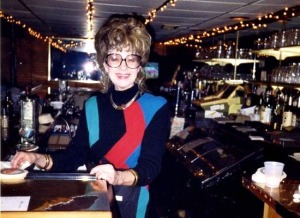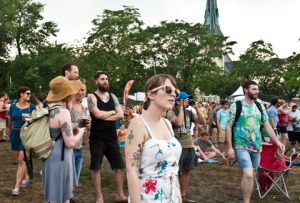What’s happening to Lakewood, why has it become all upscale-y recently? HB
She means going from this
To this
If you’ve been living in Dallas for any amount of years, at least 5, you’ve probably noticed that Lakewood seems as if its becoming more like Highland Park East, then its more modest former self. The reason why this is happening is because of the way certain populations in Dallas have settled; and limited supply of desirable housing stock for them. Or, in short, natives of the Park Cities and Preston Hollow can’t find anywhere in those communities to live so they’re moving to where they perceive is the next best option…Lakewood.
Not shown “The Balcony Club” and its Jazz music
Historically, over the last 100 years, moneyed people in Dallas have flowed north out of downtown, to the Park Cities, Preston Hollow, and into North Dallas. The middle class or more moderate income people moved east through Old East Dallas, to Lakewood, then east of the Lake into Lake Highlands and Far East Dallas. I should point out that for the first half of the past century this meant white moneyed people and white middle class. Minorities (both wealthy and not so wealthy) generally moved south into Oak Cliff, Pleasant Grove, and onto the suburbs like Desoto and Duncanville. Perhaps this is a slight oversimplification, but in broad terms it is true (except for the minorities part which has been changing for the past 30 or so years).
White middle class “Lakewood Stallions” 30 years ago.
So it’s this middle income, mixed income population that began to settle in Lakewood starting in the 1920’s. White Rock Lake had been built in the 1910’s, making the area between the Lake and Old East Dallas more desirable. Slowly, between the 20’s and the 50’s, Lakewood developed. It was a nice mix of housing, with Charles Dilbeck designed Spanish mansions on large estates that were just a block or two away from modest 2 bedroom duplexes or 3 bedroom 30’s Tudors.
Picture circa 2012, Home circa 1936
Downtown Lakewood developed in the 1930’s as simple two and three story tall row-style commercial buildings in a traditional small town style downtown. The theater was built in ’39, El Chico’s started there in 1942.
Downtown Lakewood in the mid-sixties just as the Faulkner Tower was being built
For the next 50 or so years, Lakewood continued to succeed as a middle class neighborhood, with the mix of non-traditional moneyed people like Stanley Marcus (of Neiman Marcus) but also plenty of middle class or people of more modest means. Then a funny thing started to happen around the turn of the century, something that’s accelerated in the past five years. Lakewood went upscale, traded the middle class for the upper class, and as a consequence it uber-gentrified.
Meaning less of this
And more of this
For Example
- The simple neighborhood grocery, Minyards, a staple for decades, turned into a high end Whole Foods.
- The greasy spoon diner(pictured at the top of this post) was torn down and replaced by a commercial bank.
- The respectable Centennial Liquor store turned into another bank.
- All those duplexes along Sandra that were mentioned above were torn down and replaced with large McMansions
- The old dry cleaners saw its square footage cut in half to make way for a high end Gelato shop.
- The local dive bar with live music became a gourmet hotdog place
And as perhaps the best example of how Lakewood has become Highland Park East is that fact that Matt’s Rancho Martinez, East Dallas’s staple for Tex-Mex, was replaced by Highland Park’s staple for Tex-Mex Mi Cocina (Though Matt’s did find a new place just down the road.)
Why has this happened? Well for the moneyed people of Dallas, where you live is a really big deal. It’s not just your zip code, not just whether you live in the Park Cities or not, and it’s not even which street you live on. It’s the street AND the address. There are some in Highland Park who talk about living in “Old” Highland Park as opposed to the newer sections. Where the new sections refer to the Henry Exall developed property from a hundred and twenty years ago and not the J.S. Armstrong property from a hundred years ago. These people take where you live as a mark of how wealthy and how cultured you are.
“You live where?”
And as wealthy families continue to pop out three and four kids each, there becomes more and more of them, many trying to buy houses in these areas. Areas where not only are they not building anymore houses, but they’re actually reducing the number of them, as wealthy homeowners buy adjoining lots and build larger homes.
So starting in the late 90’s with the gen x-ers, you had more and more moneyed people in Dallas trying to buy fewer and fewer homes. While it is socially acceptable to live in the Park Cities, certain parts of North Dallas and even perhaps parts of Richardson, it’s social suicide to move all the way to Plano or, gasp Frisco. And in these moneyed circles a huge amount of business gets done at social events, like dinner parties or charity balls, so social suicide begets economic suicide. In the minds of old money Dallas, moving to Plano dooms one to a life of economic and social mediocrity, regardless of whether or not this is true, it’s
their perception.
What old moneyed families think of those who move to Plano (also what comes up on Google image search for “Collin Creek Mall”)
Looking for other options those “displaced” early gen X-ers and more recently the millennials began to look at the place that their nontraditional wealthy friends from Dallas had moved to, Lakewood. Their non-traditional friends, or parents friends, living in Lakewood weren’t social outcasts, they weren’t unsuccessful, they were just …different. Progressive and liberal leaning, they marched to the beat of their own drum. Well, what traditional Park Cities and North Dallas thought was their own drum, turns out it was the same drum that many in Lakewood marched to. As an example let me go back to Mi Cocina’s founder, businessmen and restaurateur Mico Rodriguez; and compare him to Matt’s founder, chef and restaurateur Matt Martinez.
Mico posing for a magazine cover
Matt eating a Chicken Fried Steak and drinking with Julia Childs
Both are successful and respected individuals, just in their own way. The first way is the Park-y way the other is the Lakewood-y way
So when left with the prospect of moving to Plano or moving to Lakewood, many old money rich (but not that rich) people in Dallas chose Lakewood. It was more acceptable than to move out to the suburbs. In Lakewood, many of the mansions are from the same period as those in HP, even designed by the same architect. The schools are good, but not great. They even have a Whole Foods down the street, a Pacciguio’s, Mi Cocina just went in, and the trail around White Rock is so much better than the Katy Trail.
And if you don’t like the uber-gentrification of Lakewood, well don’t frequent the establishments that have pushed out the local middle class mom and pops places. Instead frequent the local modest establishments that are stiill there. Because if you do go to the new trendy upscale places that forced out the old local ones; and you’re a true Lakewoodian or East Dallasite; well, I’m fairly certain Lucille will straight up haunt your ass.
She looks sweet but she will haunt you for ordering a Heineken at Mi Cocina






















